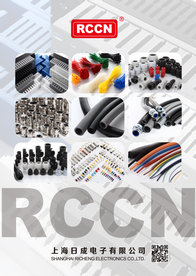Cable ducts to escape digging travails
THIRUVANANTHAPURAM: After successfully introducing cross ducts underneath city roads for the first time in the State, the Trivandrum Roads Development Corporation Limited (TRDCL) is planning to introduce cable ducts along MG road and other city roads which are under maintenance at present.
A cable duct will provide space for KSEB, Kerala Water Authority and telecom service providers for laying cables without digging the road while a cross duct helps to do repairing of existing pipe lines and cables without digging. A detailed proposal for laying cable ducts has been submitted to the Kerala Road Fund board by the TRDCL. “We hope the Government will clear the proposal. If so, there won’t be any digging of the MG road and other major roads such as Kowdiar-Pattom, Kowdiar-Peroorkada and Vellayambalam-Sasthamangalam which are being developed now,’’ said a senior TRDCL official.
In Bangalore, cable ducts had been successfully laid along several major city roads. According to the proposal in front of the Road Fund Board, big pipes made of High-Density Polyethylene will be laid on both sides of the road along the footpath. Each HDPE pipe will have eight small ducts which can be used to lay pipeline, power cable and optical fibre cable of telecom companies.
The Road Fund Board can rent out these ducts for various service providers and generate revenue from that. ‘’The only hindrance I see is the cost part. For laying cable ducts, a substantial amount is needed. But, the investment will generate regular income and hence it won’t be a dead one,’’ said the TRDCL official.
The VJT Hall-Attakulangara stretch of MG Road will be provided with cross ducts and pipe ducts underneath so that the repair work of pipelines and cables can be carried out without digging roads. The cross ducts were first introduced in the state by the TRDCL on Palayam-Chakai road and LMS-Vellayambalam-Kowdiar road.
A cross duct is a 1.5-m deep tunnel across the road (as shown in the diagram). There will be a cross duct at every 500 metre of the MG Road.
There will openings on both ends of the footpath. Utilities such as power cable, water cable and optical fibre cables will join the cross ducts. A man can enter the duct and walk through it to the end for examining the utilities.
Pipe ducts which do not have the depth of a cross duct will be provided at every 250 metres. Pipe ducts can be used to lay pipes and cables but it is impossible for a man to get in and repair cables.
Then, how a repair work can be made through a cable duct? Suppose, you have a problem with a water connection to a house in between two cable ducts. The labourer who is assigned to rectify the error can get into the cross duct and make a connection from the utility joint there. The new line can be taken to either side of the road as there are openings at the footpath on both ends. Now, this new line will be connected to the house.
The idea of paving interlocked tiles on footpaths than using concrete slabs is also to help repair works without digging the roads. The tiles can be easily restored after the repair work.
Next Page: Faulty wiring is the cause of Columbia basement fire











